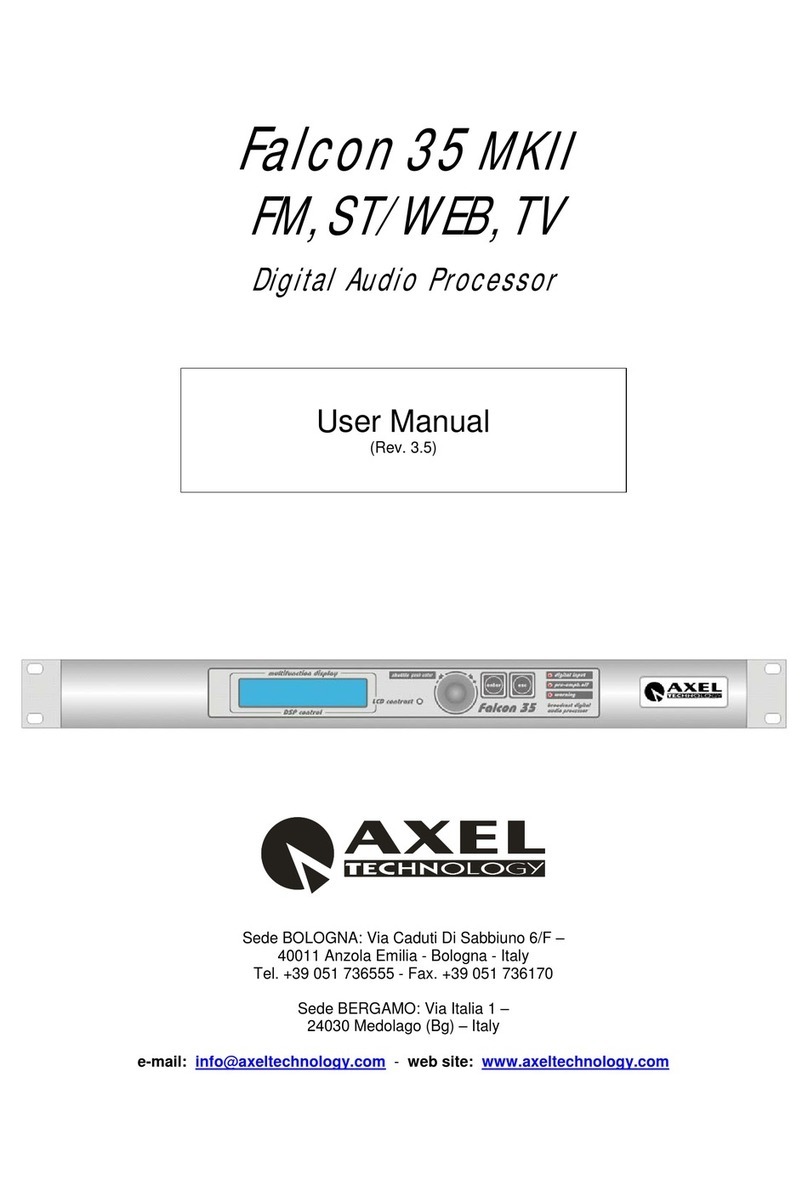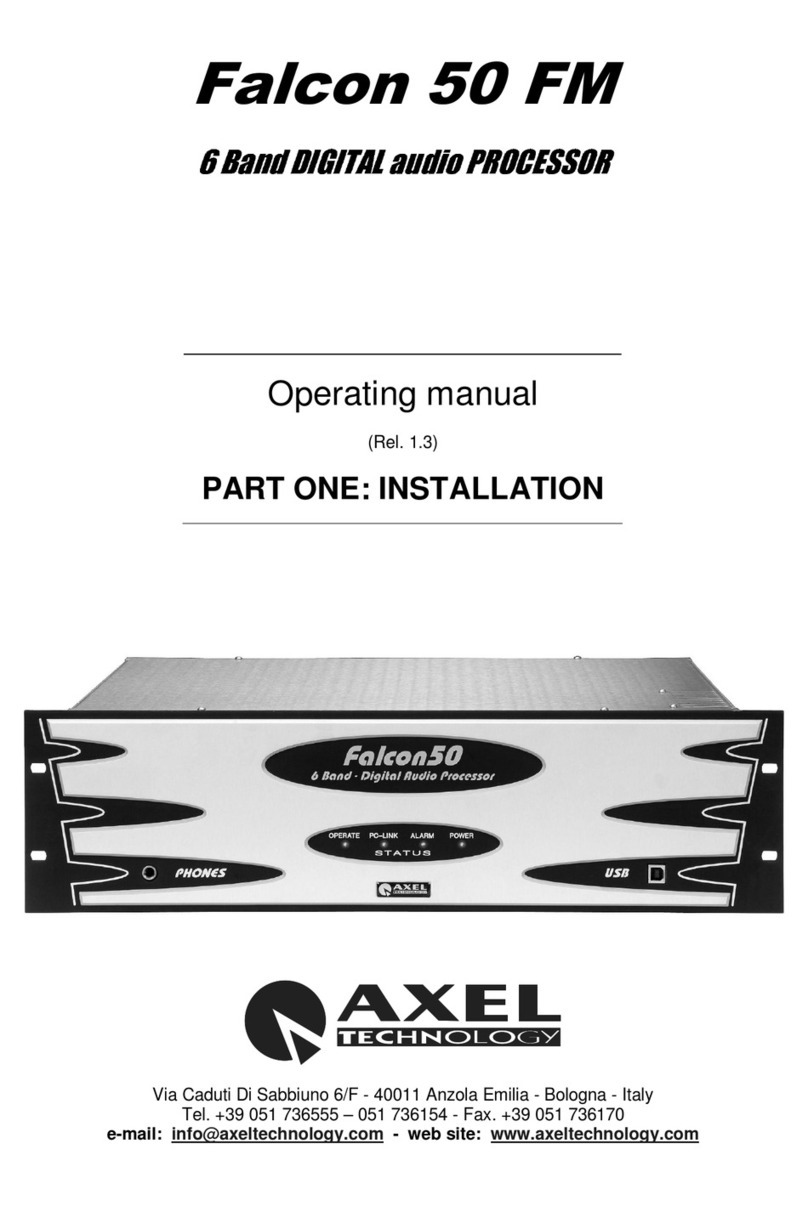
TABLE OF CONTENTS ENG
Page 4
12.5 SETTING THE SPLIT MODES.............................................................................................................................. 33
12.6 ADDITIONAL DATA AND SETTINGS................................................................................................................... 34
12.6.1 SERIAL PORT SETUP ............................................................................................................................... 34
12.6.2 SYSTEM INFO ........................................................................................................................................... 34
13 ST VERSION DESCRIPTION................................................................................................................................... 35
13.1 FRONT PANEL VIEW........................................................................................................................................... 35
13.2 REAR PANEL VIEW (ST VERSION) .................................................................................................................... 36
13.3 AC CONNECTION................................................................................................................................................ 37
13.4 DIGITAL AUDIO INPUT........................................................................................................................................ 37
13.5 SERIAL PORTS.................................................................................................................................................... 38
13.6 ANALOG AUDIO OUTPUT (MALE XLR) ................................................................................................................ 38
13.7 ANALOG AUDIO INPUT (FEMALE XLR)................................................................................................................. 39
13.8 FALCON 15 MENU TREE (ST VERSION)................................................................................................................ 40
13.9 FRONT PANEL OPERATION............................................................................................................................... 41
14 IN / OUT SETTINGS (ST VERSION)....................................................................................................................... 42
14.1 HOW TO CONFIGURE THE INPUT (INPUT SETUP)........................................................................................... 42
14.1.1 SELECTING THE INPUT (ANALOG OR DIGITAL)................................................................................. 42
14.1.2 ADJUSTING THE INPUT AUDIO LEVEL ................................................................................................ 42
14.1.3 CHOOSING THE PROPER AGC OPERATION........................................................................................ 43
14.2 THE VOICE OPTIMIZER ...................................................................................................................................... 44
14.3 HOW TO CONFIGURE THE AUDIO OUTPUT (AUDIO MODULE SETUP) .......................................................... 45
14.3.1 SETTING THE PREEMPHASIS................................................................................................................. 45
14.3.2 ADJUSTING THE AUDIO OUTPUT LEVEL ............................................................................................ 46
14.3.3 BYPASS MODE.......................................................................................................................................... 46
14.3.4 MONO - STEREO OPERATION................................................................................................................ 47
14.3.5 NOISE GATE SETTING (Noise Gate)........................................................................................................ 47
14.4 ADDITIONAL DATA AND SETTINGS................................................................................................................... 48
14.4.1 SERIAL PORT SETUP ............................................................................................................................... 48
14.4.2 SYSTEM INFO ........................................................................................................................................... 48
15 CHOOSING THE PROCESSING CURVE .............................................................................................................. 49
15.1 INTRODUCTION .................................................................................................................................................. 49
15.2 THE FALCON 15 PRESET TABLE ....................................................................................................................... 50
15.3 CHOOSING ACURVE.......................................................................................................................................... 51
16 THE REMOTE PC CONTROL SOFTWARE......................................................................................................... 52
16.1 INTRODUCTION .................................................................................................................................................. 52
16.2 INSTALLING THE PC CONTROL SOFTWARE.................................................................................................... 52
16.3 RUNNING THE PROGRAM.................................................................................................................................. 53
16.4 PC CONTROL SOFTWARE OVERVIEW ............................................................................................................. 53
17 ACCESSING THE TARGET FROM THE PC ........................................................................................................ 54
17.1 THE SETUP PANEL ............................................................................................................................................. 55
17.1.1 SELECTING THE PC SERIAL PORT........................................................................................................ 55
17.1.2 OTHER SETTINGS .................................................................................................................................... 56
17.1.3 FRONT PANEL ‘LOCK’ FUNCTION........................................................................................................ 56
18 RDS / RBDS SETTINGS (FM VERSION ONLY) ................................................................................................... 57
18.1 INTRODUCTION .................................................................................................................................................. 57
18.2 CHOOSING BETWEEN RDS OR RBDS SYSTEM............................................................................................... 57
18.3 CHANGING THE RDS /RBDS OUTPUT LEVEL .................................................................................................. 58
18.4 RDS: CONFIGURING THE SERVICES PI, PTY, DI, RADIO TEXT, TP, TA AND M/S ........................................... 58
18.5 RBDS: CONFIGURING THE SERVICES PI, PTY, DI, RADIO TEXT, TP, TA AND M/S......................................... 59
18.5.1 RDS / RBDS SERVICES DESCRIBED....................................................................................................... 60
18.6 PROGRAM SERVICE NAME (PS)........................................................................................................................ 61
18.6.1 SCOPE ....................................................................................................................................................... 61
18.6.2 THE PROGRAM SERVICE NAME EDITOR ............................................................................................. 61
18.6.3 PS SEQUENCES ........................................................................................................................................ 62





























